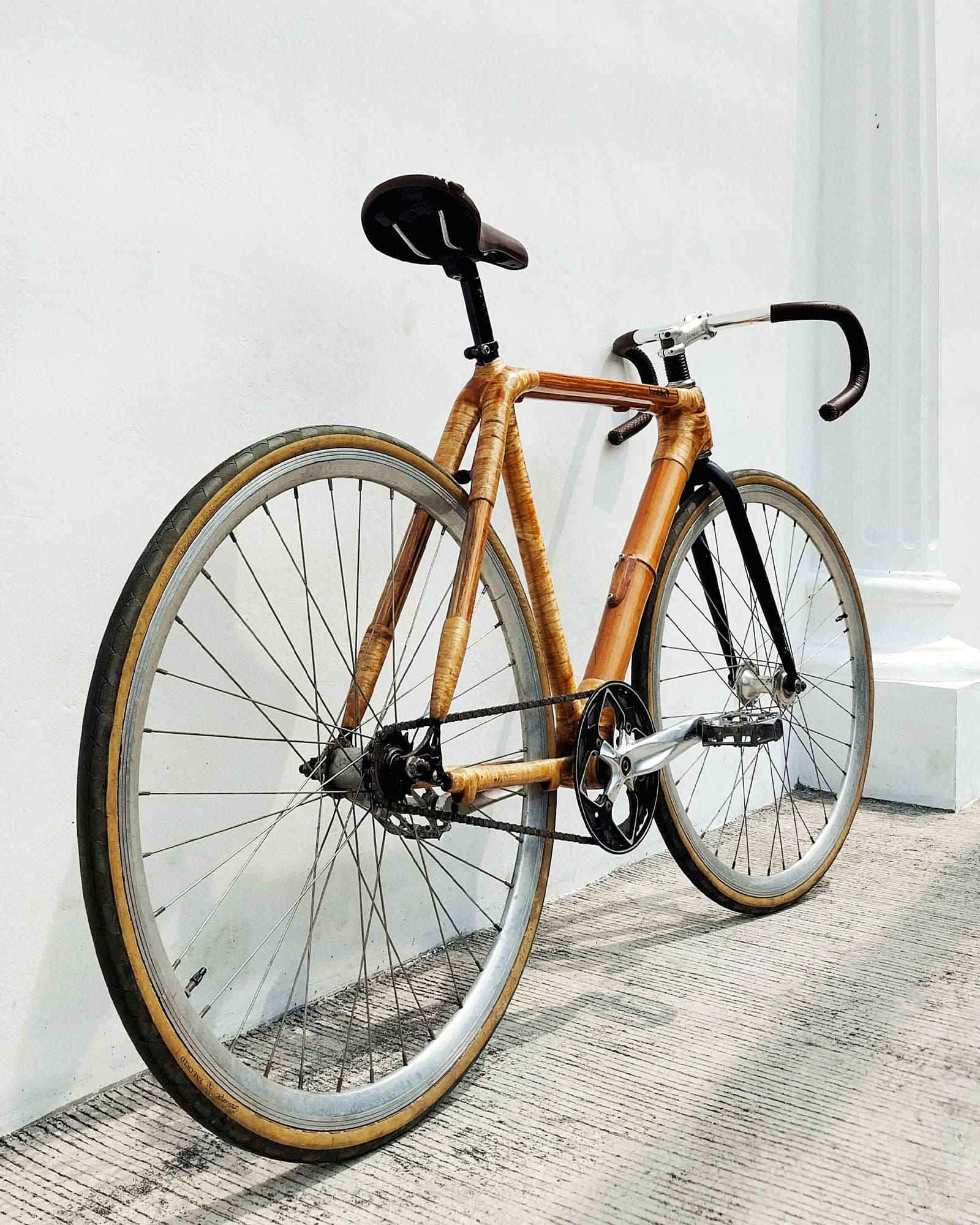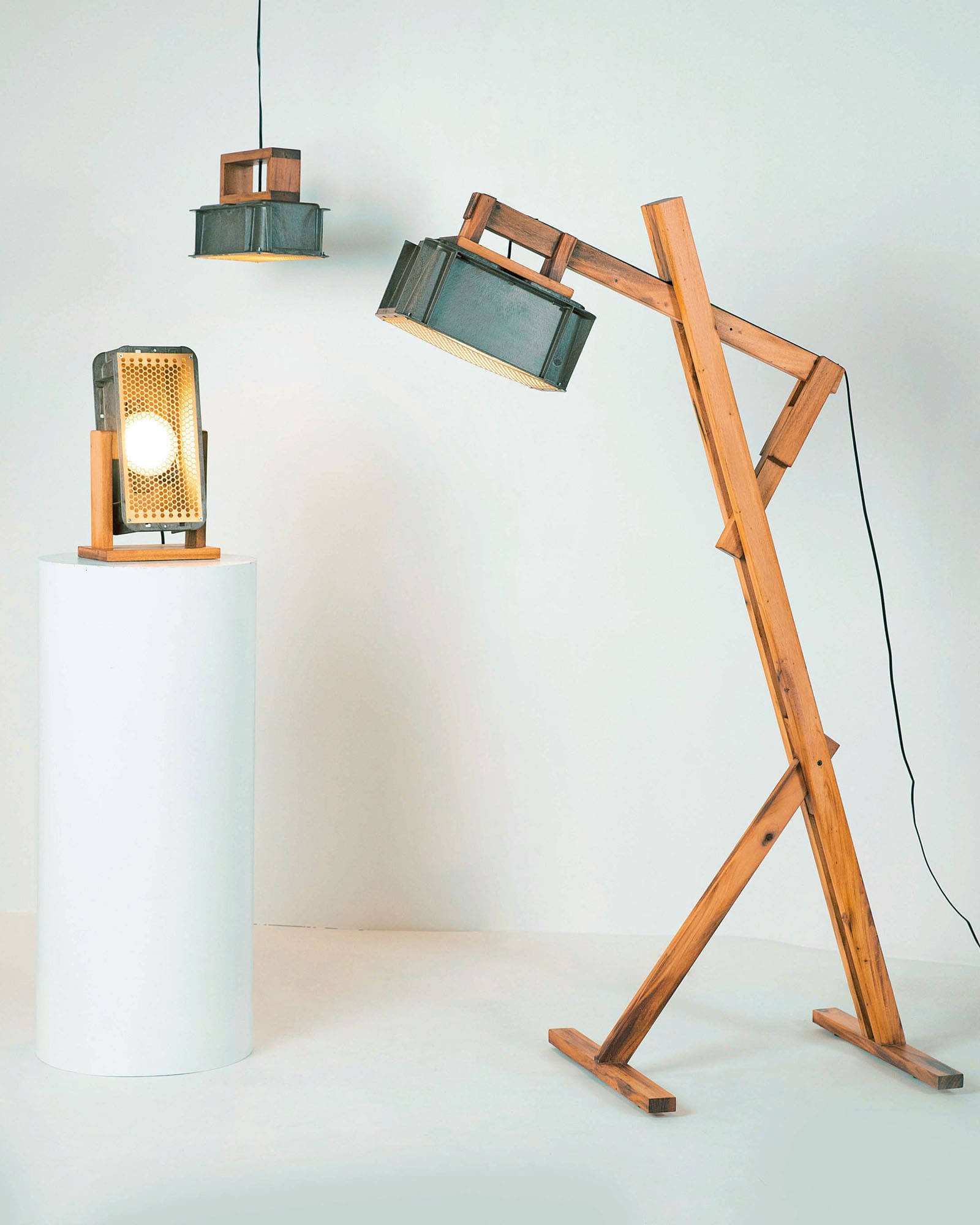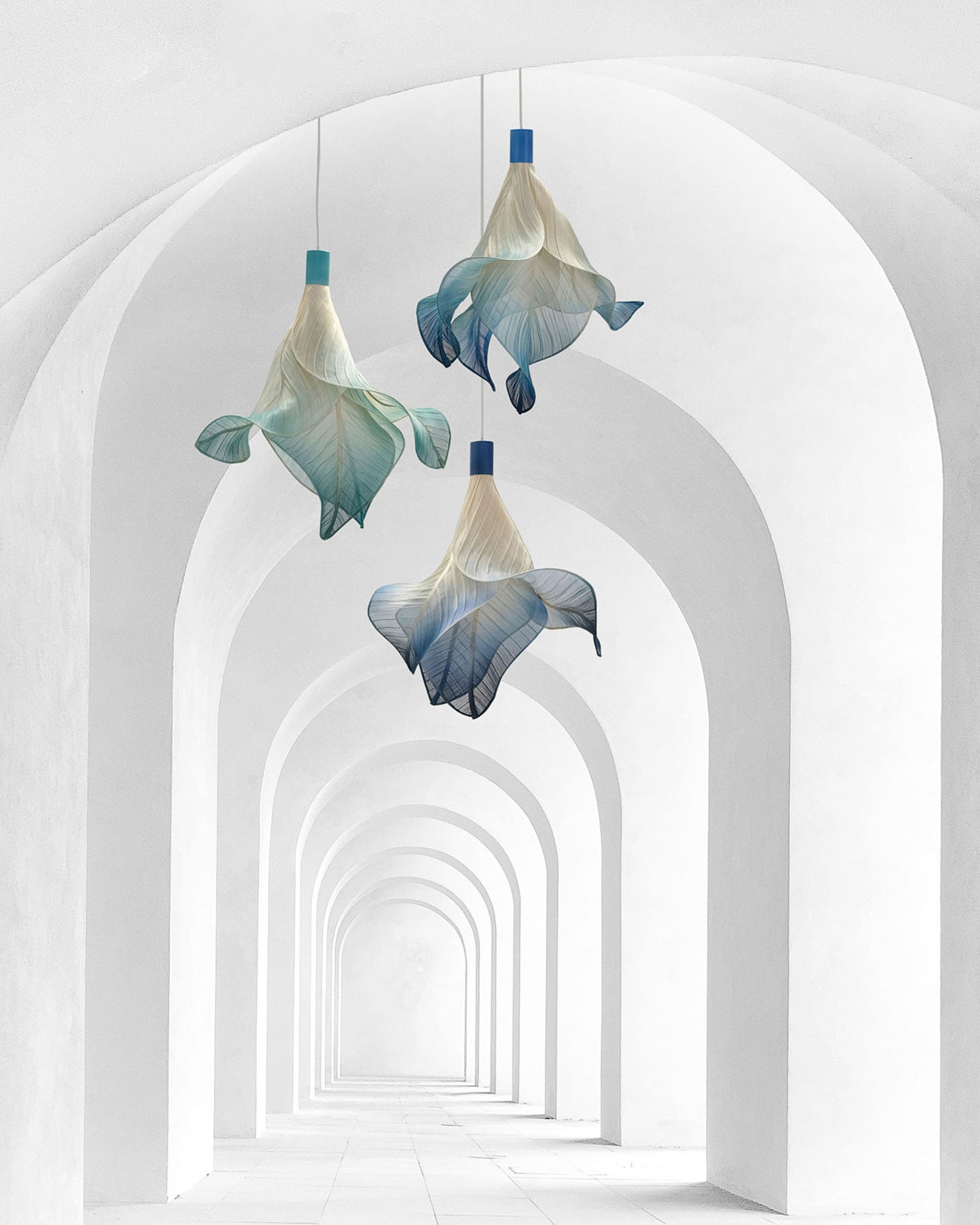We float hope to the future of designers with communities. Significant design initiatives that give relevance to the landscape of Filipino craft as they work towards one vision–To give and to give back to the environment.
As the cultural zeitgeist constantly shifts, ebbs, and flows, design is invented and reinvented as new challenges and opportunities come to create a sustainable future. In an age where environmental problems plague our world, designers Mariel Colaljo, Stanley Ruiz, Mirei Monticelli, and Bambike president and CEO Bryan McCelland are stepping up with their creative vision that aims to build a more sustainable lifestyle for future generations.
Mariel Colaljo
Bag Designer

Born and raised in Cebu, Colaljo, a Product Design graduate, apprenticed under Kenneth Cobonpue in 2017. In 2022, she was chosen as a recipient of the Design-Entrepreneurship program by Cobonpue and PLDT-Smart Foundation. “It kickstarted my brand. By 2023, I founded Marricola, a brand that uses upcycled plastic to make one-of-a-kind luxury bags,” she says.
The collaboration with her mentors—Cobonpue and his head of product design, Christy Manguerra—at first led to frustration. “We all agreed the bag needed additional elements to elevate it. The bag was missing something, and we couldn’t quite put our finger on it.”
She wandered around the cavernous halls of Cobonpue’s factory seeking a solution. “By chance, my eye was attracted to a piece of wood on my colleague’s desk. Intuitively, I felt that the warmth of the wood would complement the synthetic nature of the plastic sheets I was working with.”
Without a nanosecond of hesitation, she drilled holes, tightened screws, and wrapped cords, finally assembling the bag with plastic sheets. It was a eureka moment. “To my delight, this unexpected fusion of materials brought my first collection to life in a way that exceeded my expectations. Waste materials, instead of being discarded, became luxury items of lasting value.”
Colaljo recently launched her bag collection online, and quickly sold out. “I view each bag as an art piece,” she says. “I start by curating a selection of used plastics. I then lay out the pieces like paint on canvas. The plastic is then pressed at a precise temperature to create a unique and complex pattern.”
Bambike
Social Enterprise

“The Bambino Bolt is our simplest design yet was the one that took longest to develop,” says Bryan Benitez McClelland, president and CEO of Bamb Ecological Technology Inc. As early as 2007, during a stint in Africa, he had already realized that “bamboo has inherent qualities that are perfect for cycling—a bike frame that is stiff enough to really crank on and make for a smooth ride.”
It wasn’t easy quantifying the overall state of the bamboo industry in the Philippines at first. Government data was scarce and supply-chain information even more so. Even his own mother questioned his curious career direction. His resolve, however, was rewarded when the Philippine ambassador to the U.S. presented his handmade Bambike to the White House, which Barack Obama acknowledged was a most interesting gift.
“Laminated bamboo strips make up solid and durable poles that are connected to upcycled metal joints in an easily reproducible technique. With the capacity to produce more Bambikes at a cheaper price, we can expand our reach and positive impact,” says McClelland.
“My optimism for the future of Filipino design is boundless. I am excited to bring the next generation of solar-electric Bambikes to life. This will require us to work with other Filipino designers and will be a lot of fun.”
Over 12 years, his personal approach to social entrepreneurship has evolved. “This product has been refined over the years to accomplish its goal of empowering the next generation with the balance and awareness needed to ensure a sustainable future. People, Planet, Progress.”
Stanley Ruiz
Industrial Designer

A sometime engineer, an industrial designer later, and then design-consultancy pitstops in New York and Bali before an inevitable return to Manila… all were leaps of faith for Ruiz. The forty-something’s pilgrimages led him to private, academic, and government projects.
In-between, he played vinyl records and dabbled in unplugged woodworking, where hand tools outclassed the dull thrum of electrified ones. “As part of my personal advocacy of promoting crafts and improving design at the grassroots level, I’ve designed and developed products for and with over four hundred micro, small, and medium enterprises all over the country.”
To Ruiz, no material is taboo. Not the mildly poisonous spider lily (he uses bakong as organic fiber); not the plastic bins he contours with wood; not the humble Fimbristylis globulosa (tikog), a type of reed grass that grows in swampy areas; not the bark of the papaya tree, used as herbal remedies but in his hands, lampshade fabric.
Says Cobonpue: “Stanley has had a lot of experience working with American companies when he lived in New York, as well as with manufacturers here and abroad. He understands what it means to be both a designer and a client. Because of this, his work is fresh but not outlandish. It’s modern but retains a bit of the past. He manages to cross the line between art and commercialism successfully.”
“My RAW line of products,” says Ruiz of his items made of maple wood, hand-cut leather, and steel hardware, “captured my essential design approach—clean, bare, functional… a fusion of the handmade with industrial technology.”
Mirei Monticelli
Lighting Designer

As an artisan, she first cut her teeth by learning how to build things with her hands; later on, by using tech to augment the reality of her do-it-yourself skills. In 2019, two years after a master’s degree in Design and Engineering from Politecnico di Milano, Monticelli’s Nebula lamp received special mention from the jury during Milan Design Week. Made of banaca, a banana-abaca fiber pioneered by her mother, the fashion designer Ditta Sandico, Mirei’s organically shaped pieces showcase the craftsmanship of weaving communities in Bicol.
Though her work is material-oriented, she considers how technology can enhance the design process. “Delving deeper into computer-aided design—and incorporating 3-D printing for prototyping and production—was a game changer for me,” Mirei says. “This breakthrough opened a whole new world of possibilities. It enabled me to bring intricate geometries, so previously challenging, to life while also using traditional industrial methods.”
While other designers approach AI with distrust, she embraced it as a way to leverage her creative potential: “It’s super-helpful conducting virtual simulations for faster and more informed decision-making.”
Her scholarship under Kenneth Cobonbue taught her this: if your design pleases you, it will doubtless bring joy to someone else in the world.
“What that told me was that the best designs are born from the heart, and when we create with sincerity, our creations can connect with others on a profound level. There is a rich tapestry to Filipino design. The Philippines has its own unique artistic heritage for the world.”
Written by VANNI DE SEQUERA. Edited by KENNETH COBONPUE. Additional by DAPHNE SAGUN.
